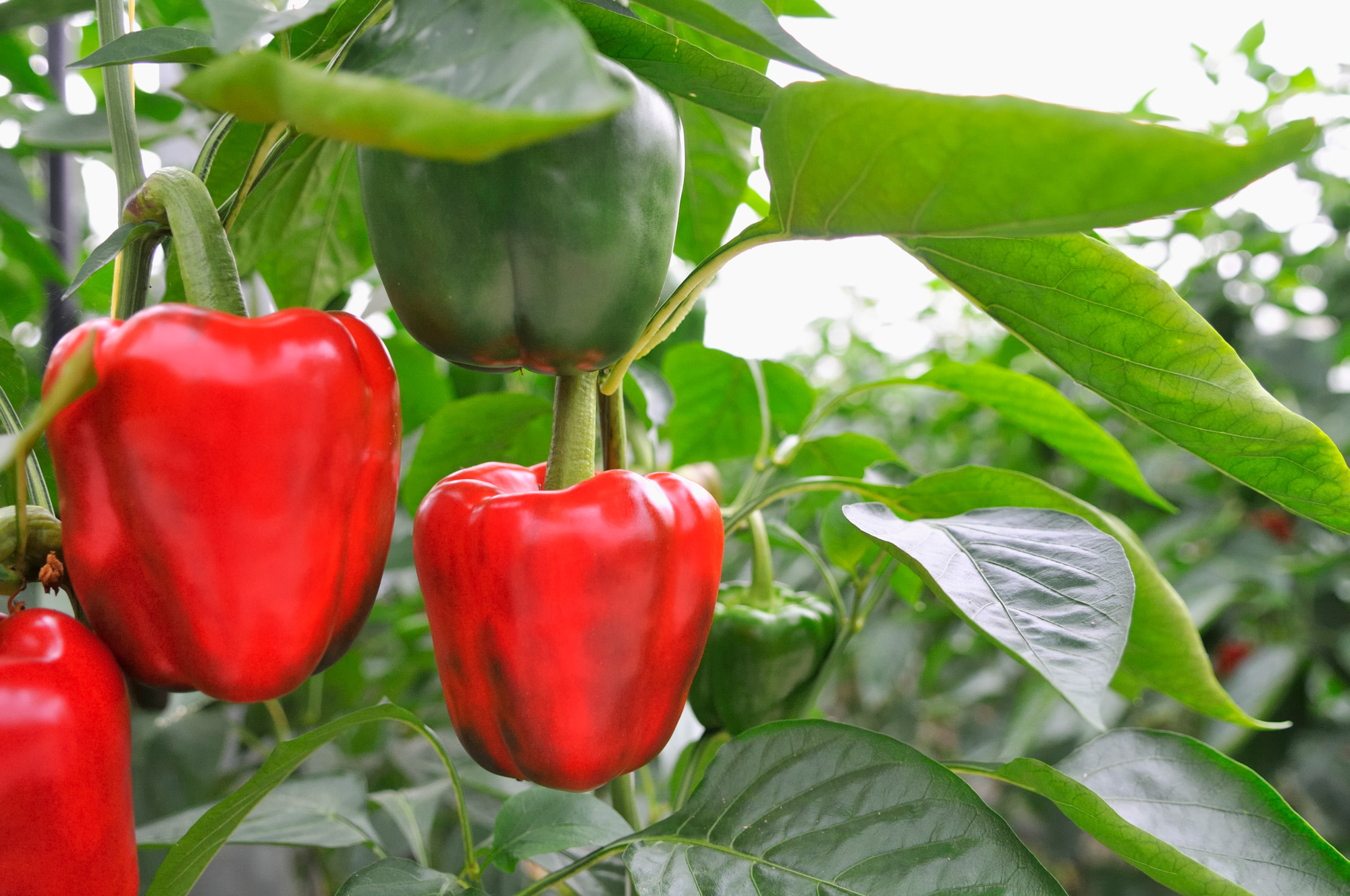Pepper
Peppers, both hot and bell varieties, are a vibrant addition to Alberta's culinary scene. While they have differing heat levels and applications, both have carved out their niches in kitchens and gardens across the province. Their colours, flavours, and versatility have made them a staple for chefs and home cooks alike.

About
Belonging to the Capsicum genus, peppers are distinguished by their varying heat levels, which are measured using the Scoville scale. Bell peppers, or sweet peppers, have a Scoville rating of zero, meaning they lack the spicy capsaicin compound. They're crisp, sweet, and come in a rainbow of colours, from green to red, yellow, orange, and even purple. Hot peppers, on the other hand, can range from mildly spicy, like jalapeños, to blazingly hot, like the Carolina Reaper. In Alberta's climate, both types of peppers are primarily grown in greenhouses or as summer annuals, benefiting from the warm season.
History
Peppers have a long history that spans continents. Indigenous peoples in Central and South America have cultivated and cherished these plants for thousands of years. Their use and cultivation have remained a consistent practice among these communities. European explorers brought peppers back to their homelands, and from there, their popularity spread globally. In Alberta, as diverse communities established roots, the demand and appreciation for both bell and hot peppers grew. Today, they're integral to many cultural dishes and festivals in the province.
Ways To Cook
The culinary applications of bell and hot peppers in Alberta are vast. Bell peppers are often enjoyed raw in salads or as crunchy vessels for dips. They're also stuffed with various fillings, roasted to enhance their sweetness, or added to stir-fries and casseroles. Hot peppers, given their heat, are used more judiciously. They can be diced into salsas, blended into hot sauces, or used to spice up a dish. When cooking with particularly fiery varieties, it's wise to wear gloves and ensure good ventilation. Pickling is another popular method, with many Albertan households preserving both bell and hot peppers to enjoy their flavours year-round. Lastly, dried hot peppers or smoked varieties, like chipotles, offer depth and heat to sauces, stews, and marinades.
Some Of Our Favourite Videos
Alberta Pepper Producers
Big Marble Farms
About this producerBroxburn Vegetables
About this producerFoods from this producer:
-
- Vegetables
Tomatoes
-
- Vegetables
- Tender-Fruited Vegetables
Eggplant
-
- Vegetables
Cucumber
-
- Vegetables
Lettuce
-
- Vegetables
Green Bean
-
- Fruit
Raspberry
-
- Vegetables
Onion
-
- Vegetables
- Cabbage Family
Broccoli
-
- Domesticated
- Feather
Egg (hen)
-
- Vegetables
- Cabbage Family
Cabbage
-
- Vegetables
- Tender-Fruited Vegetables
Pepper
-
- Herbs & Spices & Flavourings
Coriander
-
- Herbs & Spices & Flavourings
- Culinary Herb
Dill
-
- Vegetables
- Onion Family/Aliums
Garlic
-
- Vegetables
- Leafy Greens
Kale
-
- Vegetables
- Onion Family/Aliums
Leek
-
- Vegetables
Winter Squash
-
- Vegetables
Potatoes
RedHat Co-operative
About this producerGrey Arrow Farm
About this producerFoods from this producer:
-
- Vegetables
Lettuce
-
- Vegetables
- Leafy Greens
Kale
-
- Vegetables
Potatoes
-
- Vegetables
Tomatoes
-
- Vegetables
- Roots and Tubers
Beet
-
- Vegetables
Cucumber
-
- Vegetables
- Roots and Tubers
Carrots
-
- Vegetables
Celery
-
- Vegetables
Chard
-
- Vegetables
- Onion Family/Aliums
Leek
-
- Vegetables
- Tender-Fruited Vegetables
Pepper
-
- Vegetables
Onion
-
- Vegetables
Winter Squash
Mans Organics
About this producer-
Big Marble Farms
Big Marble Farms, Range Road 63, Cypress County, AB, Canada
-
Broxburn Vegetables
Broxburn Vegetables & Cafe, Lethbridge County, AB, Canada
-
RedHat Co-operative
Red Hat Co-Operative Ltd, 809 Broadway Ave NE, Redcliff, AB, Canada
-
Grey Arrow Farm
Grey Arrow Farm, Camrose, AB, Canada
-
Mans Organics
Mans Organics, Coaldale, AB, Canada
